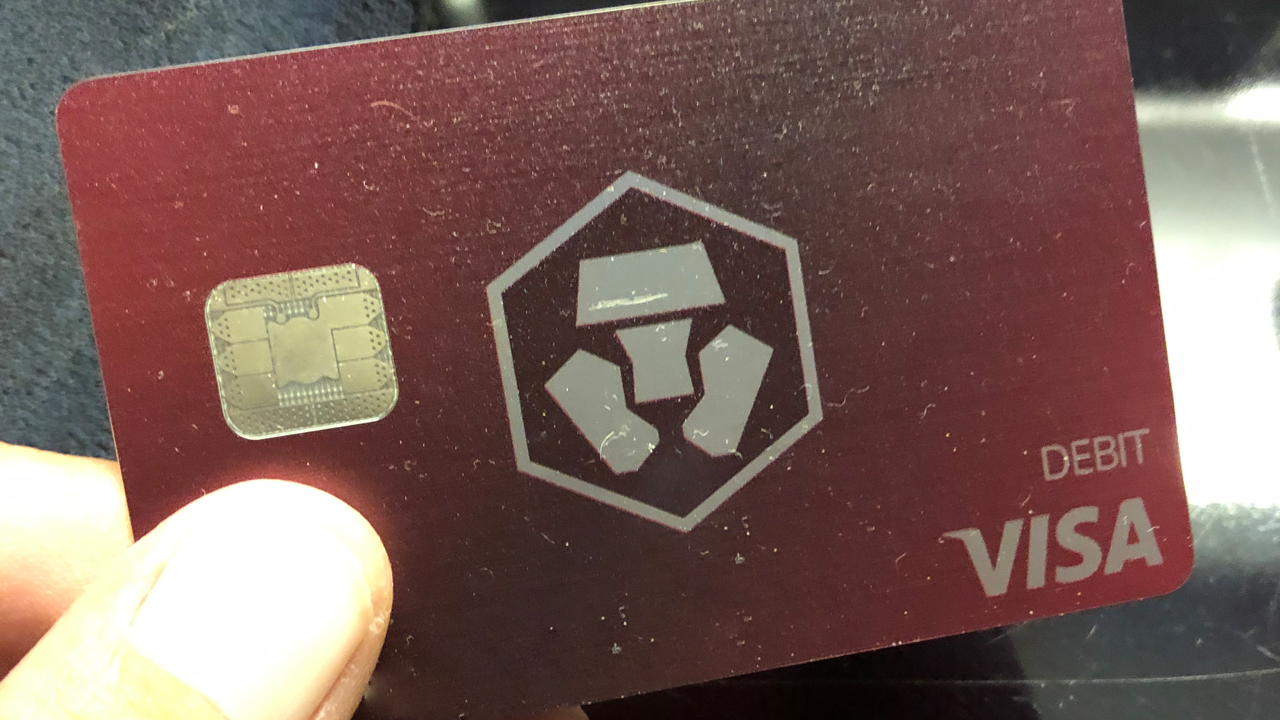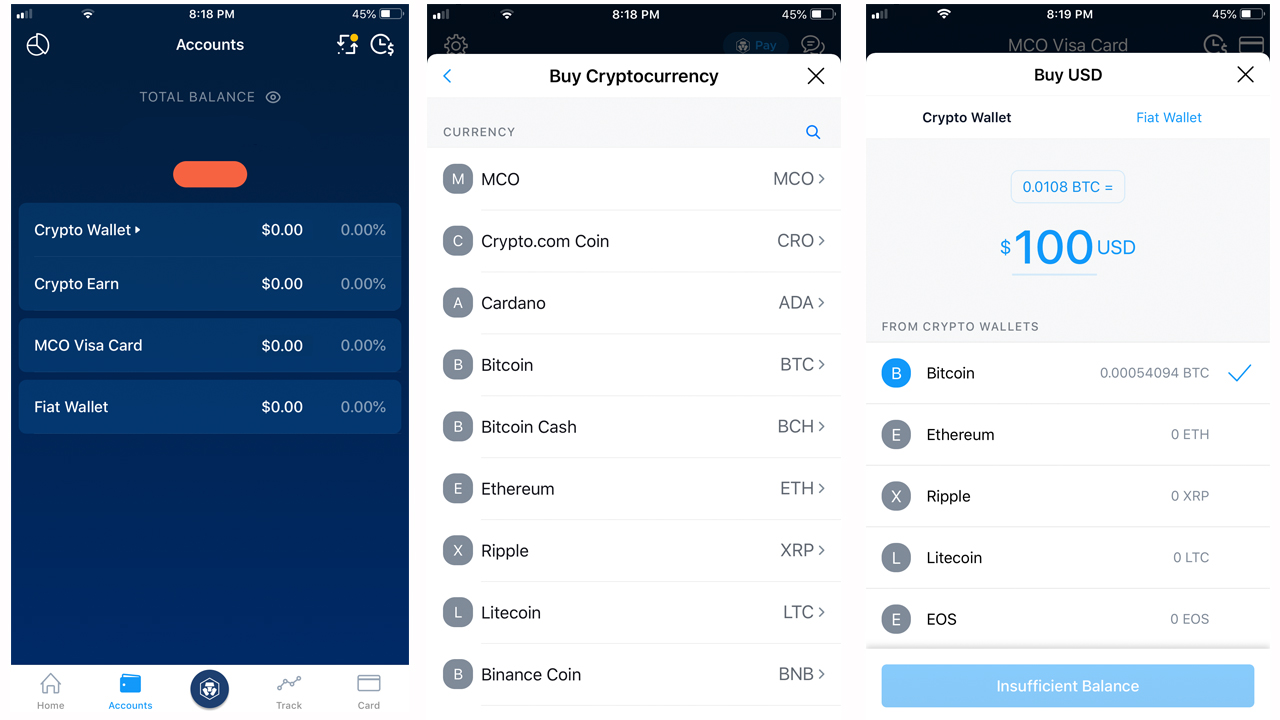[ad_1]

A number of members in the cryptocurrency community, typically people who are paid in crypto assets, have tried a myriad of prepaid cards that can be credited with digital currencies like bitcoin. The following post is a review on the Crypto.com prepaid Visa card in order to give our readers some perspective on how the card operates.
During the last four years, I’ve grown accustomed to leveraging prepaid cards that can be loaded with cryptocurrencies like bitcoin and ethereum. In the early days, there were only a few cards for U.S. residents, but now there’s a number of cards available. Americans now have few different cards available and the products are issued by reputable companies like Bitpay and Coinbase.
Last week, news.Bitcoin.com reported on Bitpay offering its new Mastercard prepaid card that can be loaded with numerous crypto assets. Our newsdesk has also reviewed Bitpay’s flagship Visa card when it launched a few years ago.
This week our newsdesk got our hands on a metal ruby-colored Crypto.com card and tested it out so our users can get a gist of how it works. Unlike Bitpay’s card, in order to get a prepaid Ruby Steel Visa from Crypto.com, an individual has to purchase the token called MCO and lock those coins for a period of six months.

At the time, when I started testing the Crypto.com card, I decided to leverage the ruby prepaid card that only requires 50 MCO locked. If a user was to choose an obsidian black card, it requires 50,000 MCO, and the coin trades for $4.50 at today’s exchange rates.
For the ruby card, the coins are locked for six months and you can get them back or keep staking them in the future. The lock-up of MCO is actually clearly mentioned in the user agreement and it’s an interesting way to get a card, to say the least. In order to get the card and do this entire process, I had to download the Crypto.com app on the App Store for iOS. The app has a built-in exchange as well, and in order to get MCO, I simply deposited some bitcoin cash (BCH) and sold it to get the coins. Once I had the 50 MCO I could then proceed to the card tab and select the ruby product.

After selecting and agreeing to the terms, the application does involve a KYC process and identification needs to be submitted. All the base requirements include a photo ID, a social security number, and a residential address.
A third-party identity system does all of the validating within roughly five minutes and lets the person know they’ve been verified. If the verification process goes smoothly, the card ships in seven days and the app lets you know when it’s been issued. The app also shows you the MCO balance you have locked into the program and any other funds you store on the platform. Crypto.com’s app offers an exchange with over 55 coins supported on the trading platform.
When the card arrived it was well packaged and the card is also metal with a touchless security chip. The metal does give the card a solid feel, in comparison to normal cards, if that kind of thing tickles your fancy. It’s still not as cool as the gold plated prepaid card Peter Schiff showed me in 2018, but us crypto heads we are doing alright.
The most interesting thing about Crypto.com’s card, however, in comparison to competitors like Bitpay, is the cashback incentives. Depending on the card you leverage, Crypto.com card users can get anywhere between 1-5% of the total, cashback paid in MCO. The ruby model used in this review gives 2% cashback in the native token.

Loading the card up is fairly intuitive, and the card supports BTC, ETH, XRP, LTC, EOS, PAX, XLM, and TUSD. Unlike paying an invoice, to top up you just need to have some of the aforementioned cryptocurrencies available in your wallet. Crypto.com also offers a noncustodial wallet that can connect to the exchange/prepaid card app. If the wallet has funds in it, you can simply top up the card by submitting the amount in USD. The transaction is based on real-time exchange rates and the card balance is settled in USD so there’s no volatility.
Using the card is fairly simple, and the touchless system works nicely, alongside the traditional chip insert method as well. So far, there haven’t been any issues at any of the physical shops I used the card at, as I have experienced some issues with other crypto prepaid cards. That will have to be tested with time and see I will see how it works traveling state to state and internationally as well.

After every single purchase, the app gives you a mobile notification (if you permit notifications), and lets you know how much cashback savings you get. So far I’ve only saved a few bucks, but every little bit helps and after a while it adds up. The Crypto.com prepaid card is available in Europe, U.K., Singapore, and it accepts SEPA. The ruby card doesn’t have too many crazy perks, but some of the other colored metal cards with higher staking MCO locked-in, offer rebates for things like Netflix and Spotify.
Some of the negatives I had with Crypto.com’s prepaid Visa was that I couldn’t top up directly with bitcoin cash (BCH) like the Bitpay card. In order to top up, I sold some BCH in order to get some bitcoin (BTC) that can be used to top off the card. So there is a fluctuating exchange rate involved with that procedure.
Users who do own the supported crypto-assets, can pay directly and skip this step. I also knew about the card for a while, when it was called Monaco, before the company was able to purchase the crypto.com domain. I hesitated at the time because of the ‘other coin’ involved and the whole staking concept, as I felt it was too much of a hassle. Monaco was lucky enough to purchase the domain Crypto.com from the cryptographer Matt Blaze who acquired it in 1993.
New crypto users should understand that there are risks involved with staking coins, and it’s a good idea for someone to study and research staking with due diligence. The number of confirmations it took for some of my coins took around six confirmations and in my opinion, that’s a long wait.
The Crypto.com app is intuitive and it doesn’t take long to understand how it all works. But someone who is new to digital assets, should get some grasp on crypto-asset logistics before opting to lock in staking coins for six months. Nevertheless, Crypto.com’s app explains everything in writing, and the card’s user agreement covers all the terms and the staking MCO as mentioned above.
What do you think about the Crypto.com prepaid card? Let us know what you think about this subject in the comments section below.
Image Credits: Shutterstock, Pixabay, Wiki Commons, Crypto.com,
Disclaimer: This article is for informational purposes only. It is not a direct offer or solicitation of an offer to buy or sell, or a recommendation or endorsement of any products, services, or companies. Bitcoin.com does not provide investment, tax, legal, or accounting advice. Neither the company nor the author is responsible, directly or indirectly, for any damage or loss caused or alleged to be caused by or in connection with the use of or reliance on any content, goods or services mentioned in this article.
Read disclaimer
[ad_2]
Source link





